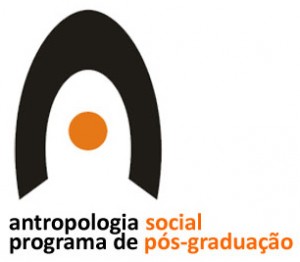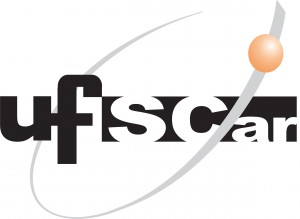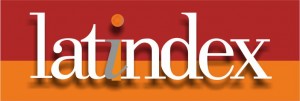Tesouros linguísticos escondidos nas histórias e nas conversas
Boas e a importância na documentação e descrição de língua e cultura
DOI:
https://doi.org/10.52426/rau.v14i1.409Palavras-chave:
Boas, documentação, linguística, línguas amazônicas, mobilidade, interação socialResumo
O legado de Boas tem sido retomado na área de documentação e descrição das línguas indígenas. Um dos seus pontos centrais é deixar a língua contar a sua própria história, ou seja, permitir aos falantes falarem por si mesmos, criando um registro de fala espontânea em situações de comunicação naturais. Isso, segundo Boas, facilitaria a descoberta de estruturas e categorias gramaticais, lexicais e culturais que permaneceriam obscuras para o pesquisador caso não permita o surgimento de pontos de vistas indígenas. Tomando essa perspectiva como fio condutor para o trabalho de campo, apresentamos aqui dois estudos de casos com os povos Dâw e Hupd’äh (Naduhup), mostrando como a escolha de registros pelos próprios indígenas e o método de observação participativa apresentaram-nos categorias gramáticas e lexicais, como por exemplo um inventário de verbos de movimento estruturado na base de traços topográficos e afixos, indicando tipos de interações sociais muito inesperadas.
Referências
BOAS, Franz. 1911. Handbook of American Indian Languages. Washington: Government Print Office.
BURENHULT, Niclas; PURVES, Ross. 2020. “The spatial properties of forager motion categories: evidence from Jahai”. Hunter Gatherer Research, 4(3): 411-426.
CHERNELA, Janet. 2003. “Language Ideology and Women’s Speech: Talking Community in the Northwest Amazon”. American Anthropologist, 105(4): 794-806.
DOBRIN, Lise M. 2008. “From linguistic elicitation to eliciting the linguist: Lessons in community empowerment from Melanesia”. Language, 84: 300–324.
EPPS, Patience. 2001+. Hup Collection. Archive of the Indigenous Languages of Latin America. Disponível em http://ailla.utexas.org.
_____. 2008. A Grammar of Hup. Berlin: Mouton de Gruyter (Mouton Grammar Library 43).
_____. 2009. “Language classification, language contact, and Amazonian prehistory”. Language and Linguistics Compass, 3(2): 581-606.
EPPS, Patience; BOLAÑOS, Katherine. 2017. “Reconsidering the ‘Makú’ family of northwest Amazonia”. International Journal of American Linguistics, 83(3): 467-507.
EPPS, Patience; OBERT, Karolin. No prelo. “Linguistic clues to hunter-gatherer histories: the Naduhup peoples of northwest Amazonia”. Manuscrito não publicado (submetido).
EPPS, Patience; OBERT, Karolin; STORTO, Luciana. 2013+. Documentation of Dâw, a Nadahup language of Brazil. Endangered Languages Archive and Archive of the Indigenous Languages of Latin America. Disponível em http://elar.soas.ac.uk/deposit/0362 e http://ailla.utexas.org.
EPPS, Patience; WEBSTER, Anthony K.; WOODBURY, Anthony C. 2017. “A humanities of speaking: Franz Boas and the continuing centrality of texts”. International Journal of American Linguistics, 83(1): 41–78.
_____. Documenting speech play and verbal art: a tutorial. Manuscrito não publicado (no prelo).
EVANS, Nicholas. 2003. “Context, culture, and structuration in the languages of Australia”. Annual Review of Anthropology, 32: 13–40.
EVANS, Nicholas; LEVINSON, Stephen C. 2009. “The myth of language universals: Language diversity and its importance for cognitive science”. Behavioral and Brain Sciences, 32 (5): 429-448.
FOIRN (Federação das Organizações Indígenas do Alto Rio Negro). 2019. Plano de Gestão
Territorial e Ambiental: Terra Indígena Alto Rio Negro. São Gabriel da Cachoeira: FOIRN.
HIMMELMANN, Nikolaus. 1998. “Documentary linguistics and descriptive linguistics”. Linguistics, 36: 161-195.
HOPPER, Paul; TRAUGOTT, Elizabeth. 2003. Grammaticalization. Cambridge: Cambridge University Press.
KOCH-GRÜNBERG, Theodor. 1906. “Die Indianer-Stämme am oberen Rio Negro und Yapurá und ihre sprachliche Zugehörigkeit”. Zeitschrift für Ethnologie, 38: 167-205.
MARTINS, Silvana A. 2004. Fonologia e gramática Dâw. Tese de doutorado. Vrije Universiteit, Amsterdam. Amsterdam: LOT.
MONTEIRO, Lirian R.; MCCALLUM, Cecília Anne. 2013. “A noção de ‘bem viver’ hupd’äh em seu território”. Mundo Amazónico, 4: 31-56.
MITHUN, Marianne. 2001. “Who shapes the record: The speaker and the linguist”. In: P. Newman; M. Ratliff (orgs.), Linguistic Fieldwork. Cambridge: Cambridge University Press. pp. 34-54
NATTERER, Johann. 1831. Sprachproben. [Manuscript in University of Basel Library, Basel, Switzerland]. Disponível em https://basel.swisscovery.org/permalink/41SLSP_UBS/mmbbsj/alma9972412425205504.
NIMUENDAJÚ, Curt. 1950 [1955]. “Reconhecimento dos rios Icána, Ayarí, e Uaupés, março a julho de 1927: apontamentos linguísticos”. Journal de la Société des Américanistes, 44(1): 149-178.
OBERT, Karolin. 2019. The linguistic encoding of space in Dâw. Tese de doutorado, Universidade de São Paulo, São Paulo.
O'MEARA, Carolyn; BURENHULT, Niclas; ROTHSTEIN, Mikael; SERCOMBE, Peter. 2020. “Representing space and place: hunter-gatherer perspectives”. Hunter Gatherer Research, 4(3): 287-309.
RAMIREZ, Henri. 2006. A Língua dos Hupd’äh do alto Rio Negro: Dicionario e guia de conversação. São Paulo: Associação Saúde Sem Limites.
Downloads
Publicado
Como Citar
Edição
Seção
Licença
Copyright (c) 2023 Revista de Antropologia da UFSCar

Este trabalho está licenciado sob uma licença Creative Commons Attribution-ShareAlike 4.0 International License.





